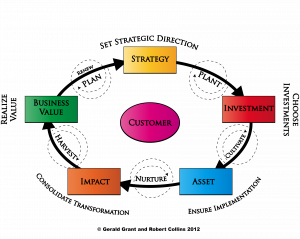Organizations spend a great deal of money on Information and Communications Technology (ICT). Such technology is widely believed to be the key to organizational efficiency, competitive success, transparency and much else. Too often, however, the focus shifts from the desired business value to the technology itself. As a result, when work is completed, it is often unclear if the original objectives were achieved.
To ensure that real value is gained from investments in ICT, we strongly recommend regular audits focused on the value produced by these investments. Such audits focus on value by assessing the full cost of any system (or systems) and the full benefits achieved. These may be measured in fiscal terms or may be stated in non-currency metrics. Regardless of the metric used, there must be a metric or it is impossible to measure the benefit gained from the cost incurred. To paraphrase Jack Welch, “if you can’t measure it, you can’t manage it.”
A Value Audit is not focused on the technology issues such as architecture, security, technical components, interoperability and information management. While these will impact the value produced by the resulting system, they are merely the means to achieve that value. The goal of a Value Audit is to get beyond the technical jargon and assess, in terms meaningful to shareholders, taxpayers and/or donors, the value that was achieved for the investment that they made. As such, Value Audits are better carried out by an auditor more versed in business matters than an IT professional.
A Value Audit may be focused on a single system. It is vital to assess any investment on its own to determine if the goals of the original investment have been achieved. Equally important, is to understand the value being produced by the broad IT legacy and infrastructure that takes up the bulk of the budget of any IT department. Such a broad audit should be undertaken regularly, but not annually, to provide a full context for any specific audits and as an input to strategic planning and budgeting. The results of such an Environmental Value Audit should be incorporated into a regularly referenced document such as an Enterprise Architecture.
The basis for a Value Audit in this document are based on the concepts articulated in a book: The Value Imperative: Harvesting Value from IT Investments, by Dr. Gerald Grant of the Sprott School of Business at Carleton University and Rob Collins, former CIO in the private and public sector. Several of these concepts referenced in this document need to be understood fully to properly undertake a Value Audit. These include:
- The Value Cycle
- The Value Realization Cycle
- The Agricultural Model of IT Investment
- Governance

By applying these concepts and models, it is possible to fully assess the value being produced by any IT investment(s) both on their own and in the context of an overall organizational strategy.
A Value Audit of an IT system (or environment) should become a standard practice of any organization dependent upon technology to deliver on its mission.
To find out more about Value Audits of IT Investments, or to arrange training for internal or external auditors, contact us.
